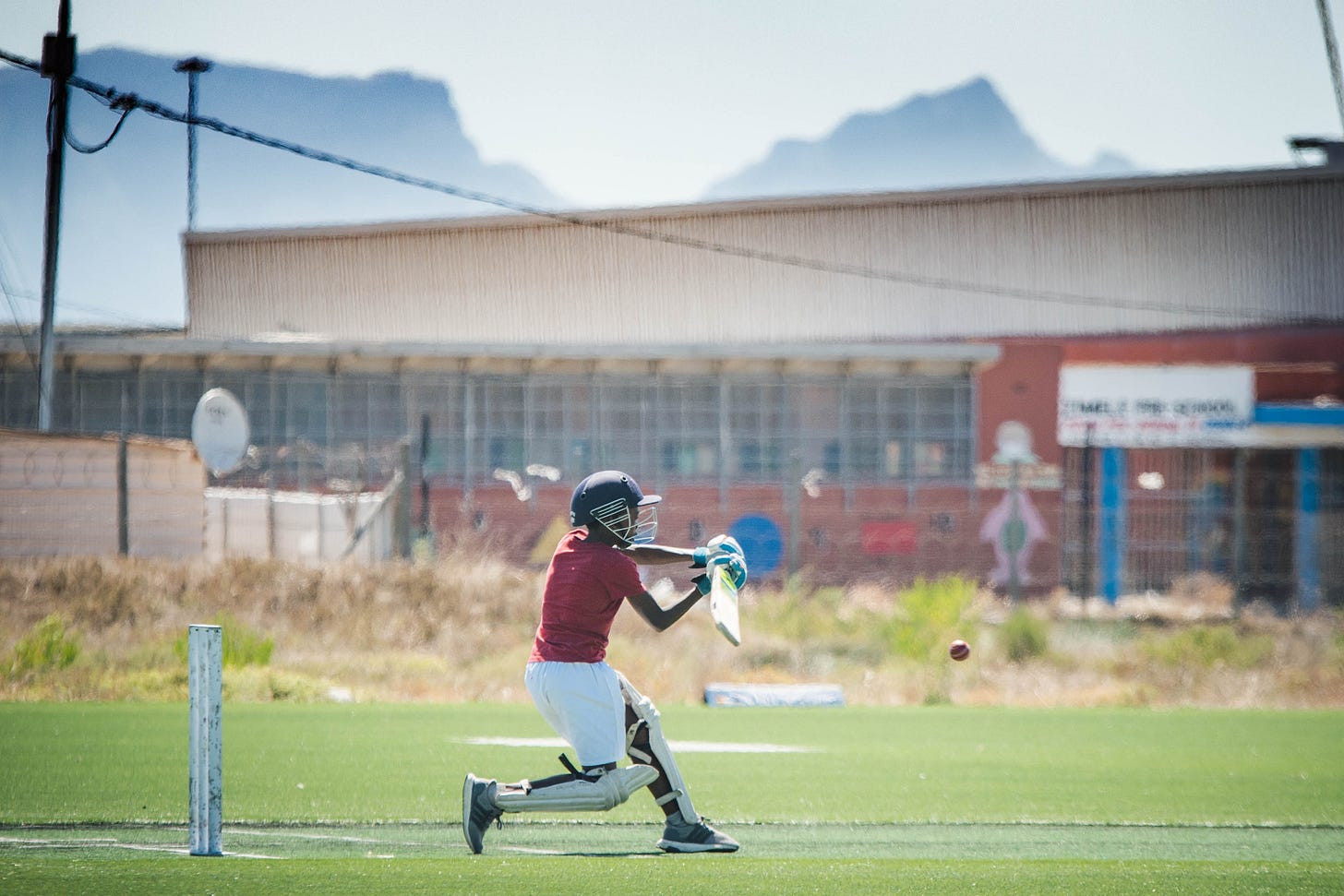There was some fabulous news for South African cricket last week so, although there are still a few provisos and hurdles to clear before the news is made public, this is a happy column.
Finally, a collective will appears to have returned to resume the exposure and growth of the game in South Africa’s poorest but most potentially cricket-fertile regions. If all the Ts can be crossed and Is dotted, the national teams will once again be seen on free-to-air national television after a hiatus of almost two years.
The news came, coincidentally, a few days after the publication of an article in the excellent Daily Maverick profiling 20-year-old seam bowler Ayanda Hlubi who is the ‘baby’ of the squad at the Women’s T20 World Cup. How was she introduced to the game?
“I used to watch cricket on TV, when it played on SABC 3. Or sometimes I’d listen to it when it was on the radio. At that time, it was the Proteas Men I had access to. But yes, the radio was always on at home – because that’s the way we live in the rural areas,” Hlubi told Daily Maverick (from whom I borrowed the photograph.)
It was not the first time I had heard it. More like the thousand and first, but it made my heart sing to read it. Having commentated on SABC radio for the best part of 30 years, it broke my heart when ball-by-ball was dropped by the national broadcaster around five years ago. Nothing to do with me personally, but everything to do with the hundreds of thousands of people I knew were listening and to whom the service meant so much.
“Sometimes I would accidentally [come across] a match on TV. Then I would sit and watch to put a visual aspect to this sport that I was regularly listening to on the radio. So, when I got to watch, I realised that this is actually an interesting sport,” said Hlubi.
Every single time I went to East London, in particular, I was greeted with effusive enthusiasm by spectators and staff at Buffalo Park. In the privileged, almost exclusively white suburb of Cape Town where I reside, I’m mostly unknown. Occasionally people recognise my voice and look quizzical that the face is unfamiliar.
But in the many parts of South Africa where Supersport decoders and satellite dishes are thin on the ground, and roofs, I was a minor celebrity amongst the major celebs on the comms team – Zolani Boncqo, Mluleki Ntsabo, Aslam Khota and Hussain Manack, amongst others.
Recently I was in Khyelitsha visiting Gary Kirsten’s wonderful academy, now renamed the ‘Catch Academy’. I was semi-accosted by distraught cricket lovers wanting to know why their lifeline to the national game had been severed. It was hard not to take it personally, even harder to explain. It’s complicated, but simple at the same time.
The subject of pay-for-view and free-to-air television coverage of the game is far from exclusive to South Africa. It’s universal. England and Australia are forever arguing about the advantages of satellite and cable cash against the disadvantages of the majority of the population, especially the young, impressionable ones, not being able to watch the nation’s best players.
It’s an ideological argument in first-world countries. The game will survive if its highest echelons are not seen by the impressionable youth, but it will become increasingly elite. That much is obvious by the number private schooled, privileged youngsters who have gone on to play for England since the 2005 Ashes when Sky bought the rights and everybody (most people) didn’t watch England games because they couldn’t afford to.
In third-world countries, however, it is not an ideological discussion, it’s practical and real. In South Africa especially, where racially representative teams are increasingly important, the need to attract young, less privileged players to the game is critical to meeting transformation targets – or goals.
Supersport is comfortably the best sport content provider in the world. The range of international sport is unprecedented and unmatched around the world, and the value for money untouchable. They have not only the right but the duty to protect and defend their service. Agreeing to the SABC screening cricket internationals, even paying sub-rights, might not seem sensible.
But they are sensible people well aware that the majority of those viewers will never be able to afford a decoder and also that a strong, diverse national cricket team is ultimately in their best interests. If the Proteas could emulate half of the Springboks’ success then Supersport would benefit.
Sadly, there are no signs that ball-by-ball commentary will resume on the radio. I said at the time that the cost to the game would be calculated a decade later, and it will be exorbitant. It is already high. But at least it seems likely to feature once again on free-to-air television. We won’t be able to get the whole band back together with several commentators having been forced to move on, but I’ll be available, if selected.








Some of my fondest memories with my father were the long road trips we shared, listening intently to live cricket broadcasts on Radio 2000
Agreed, radio 2000 were fantastic with the cricket commentary and it would be great to hear your voice again Mr Manthorp. You really were the voice of cricket back in the day for me.